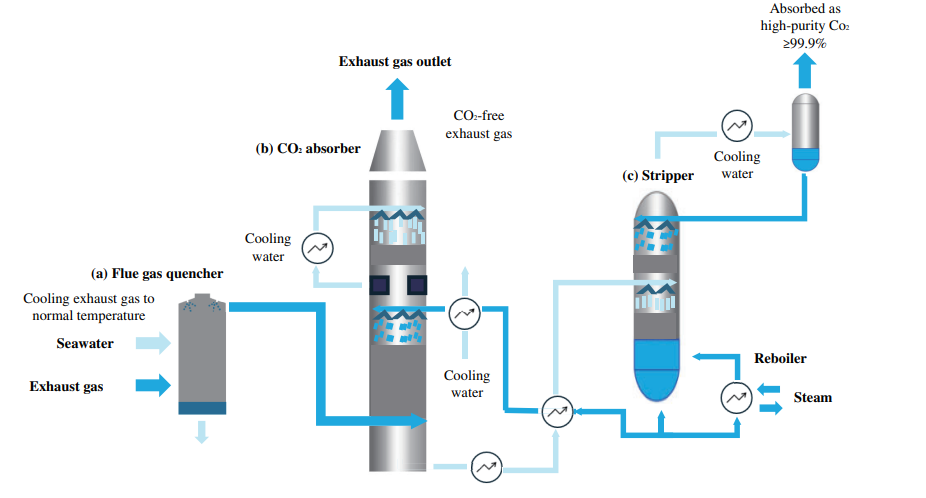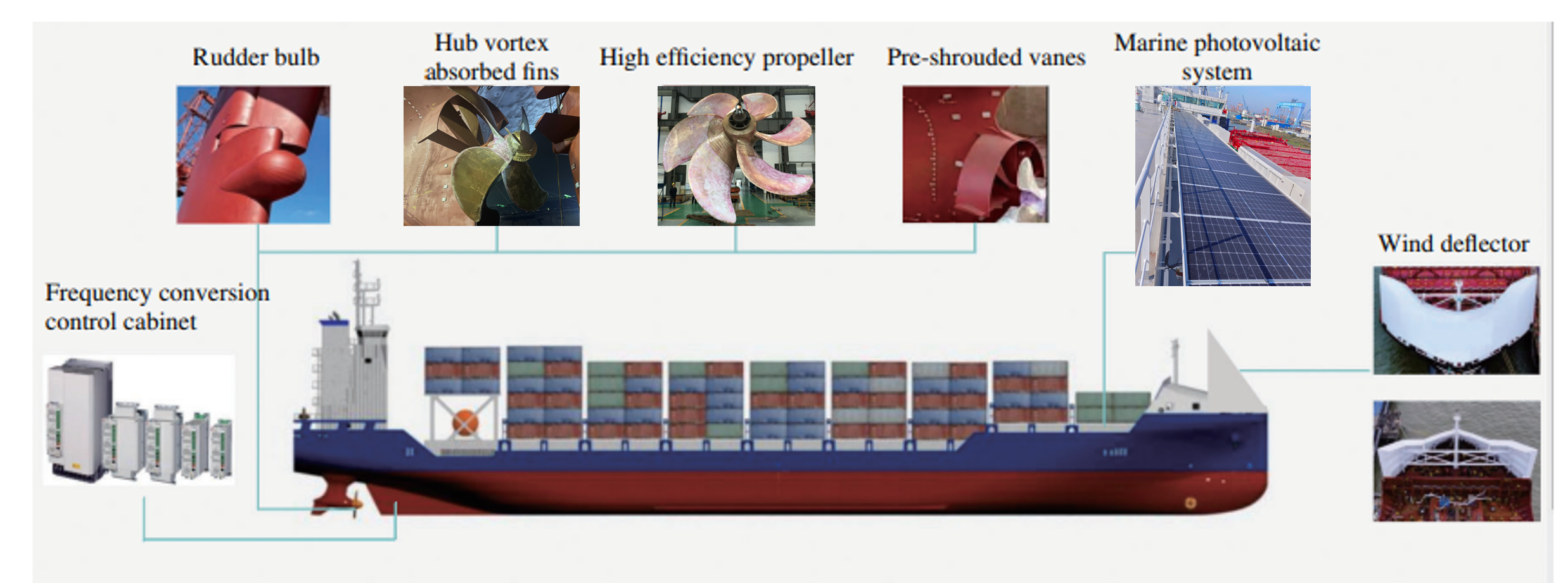Our marine energy-saving and carbon reduction solution includes: (i) carbon reduction solution and (ii) energy-saving devices, both or one of which our customers can purchase, depending on their needs.
Carbon reduction systems
To comply with IMO’s GHG emission targets, customers consider adopting marine energy-saving devices and carbon reduction systems. These equipment and systems help reduce payments from carbon taxes and trading and align with the IMO’s GHG Emission Strategy in the long run. According to Frost
& Sullivan, the marine energy-saving devices and carbon reduction systems are projected to reach US$2,686.1 million by 2028. Meanwhile, the market share is expected to increase from 10.2% in 2023 to 23.6% in 2028, providing strong support for the development of the maritime environmental protection equipment and system industry.
Considering the market demand, we have developed carbon reduction systems and considered them as our key offerings. Our carbon reduction systems include: (i) organic amine-based carbon capture system, (ii) dual alkali-based carbon capture system and (iii) CO2 flowmeter system. We have been developing the dual alkali-based carbon capture system, the CO2 flowmeter system and the organic amine-based carbon capture system since 2021, 2022 and 2023, respectively, the development of which was completed in the fourth quarter of 2024, in the fourth quarter of 2023 and in the second quarter of 2024, respectively. Recognizing their potential to drive future growth, we have initiated comprehensive marketing and sales strategies to secure orders and build a strong customer base. Key efforts include direct outreach to potential customers, participating in industry conferences and exhibitions to showcase the advanced capabilities of the products. Going forward, we will focus on intensifying these promotional activities to drive market penetration.
(i)Organic amine-based carbon capture system
Our organic amine-based carbon capture system meets the technical standards required for ship decarbonization and can be integrated with our ship exhaust gas cleaning systems. The integration allows for the operation of a single system that achieves both the desulfurization and the decarbonization objectives.
Our organic amine-based carbon capture system, captures carbon in the form of liquid CO2. This method offers a high degree of flexibility in terms of space utilization on ships, as the captured CO2 can be stored in tanks. Moreover, the desulfurization and decarbonization process can be realized simultaneously in organic amine-based carbon capture system, which can satisfy requirements of ship exhaust gas cleaning and carbon emission reduction at the same time.
The fundamental underlying principle of our organic amine-based carbon capture system is the exothermic and reversible reaction between a weak acid, such as CO2, and a weak base, such as monoethanolamine (MEA), to form a soluble salt. The product obtained from the amine decarbonization process described above can be directly desorbed on board and then liquefied through pressurization and cooling to obtain liquid CO2. This liquid CO2 can be stored on board and transported to the shore.
The organic amine-based carbon capture system has reached a commendable level of development with the completion of its prototype. This advancement was substantiated by the on-site verification conducted by a surveyor from the American Bureau of Shipping, which is a globally recognized maritime classification society. Our system demonstrated a carbon capture efficiency of 93%, a figure that not only reflects its high performance but also its potential to significantly reduce GHG emissions from ships.
The following diagram illustrates the process of our organic amine-based carbon capture system:

(ii)Organic amine-based carbon capture system
The process of our dual alkali-based carbon capture system produces a solid product, CaCO3, which can be stored in designated storage spaces within the ship, and makes this method cost effective. The lower associated costs make the dual alkali-based method particularly suitable for in-service ships without significant alterations to the existing structure. We have obtained the Classification Society approval in principle from Lloyd’s Register for this system.
(iii)CO2 flowmeter system
Our CO2 flowmeter system is a real-time, online CO2 monitoring system developed specifically for the maritime field. It calculates both real-time and cumulative carbon emission from ships. The primary components of the system include a flue gas flow measurement system, a flue gas analysis and detection system, and a data analytics and control unit.
Energy-saving devices
Our energy-saving devices mainly include rudder bulb, pre-shrouded vanes, hub vortex absorbed fins, high efficiency propeller, wind deflector, marine photovoltaic system and frequency conversion control cabinet to help ships cruise with greater energy efficiency.
The following diagram illustrates the locations where these devices should be installed on a ship:




